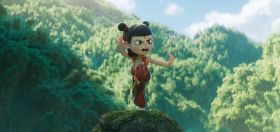From the creative forces behind AACTA award-winning and Emmy-nominated wildlife documentary, Life on the Reef, comes Australia’s Ocean Odyssey. The documentary, which sees director Nick Robinson reunite with Life on the Reef cinematographer Jon Shaw, follows the East Australian Current around the Australian coastline, revealing the incredible impact that ocean currents have on every aspect of life on earth.
After four years in production, including two years filming, the ambitious three-part documentary portrays the planet ‘as a living thing, and the ocean as a vital organ. That way, they might be more inclined to look after it, like they do their own bodies.’





